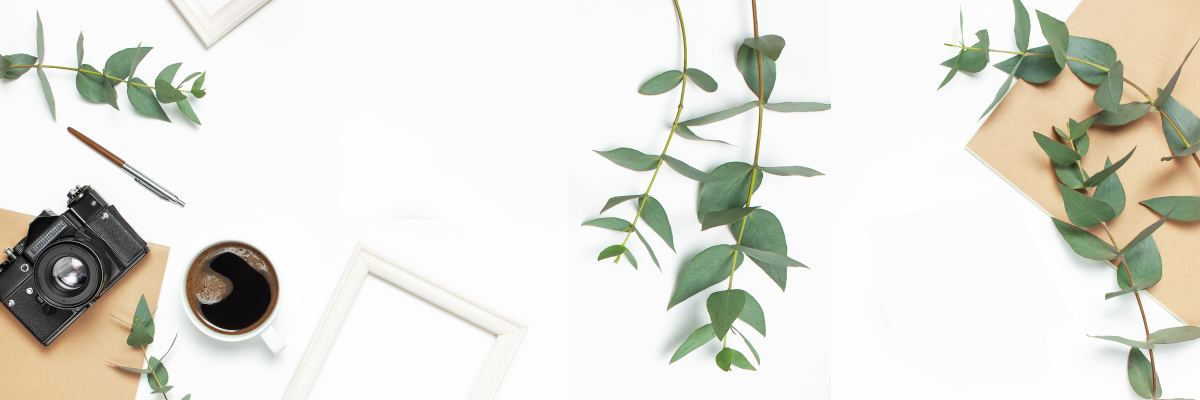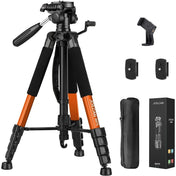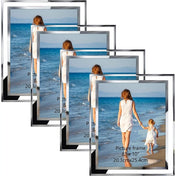Photography is not just about capturing a moment; it is about telling a story. And one of the most important elements in telling that story is composition. Composition refers to how the various elements within a photograph are arranged and placed to create a visually appealing and balanced image. A well-composed photograph can grab the viewer's attention, evoke emotions, and leave a lasting impression. In this article, we will explore the art of composition in photography and share tips and techniques to help you capture stunning images.
The Rule of Thirds: A Basic Foundation
One of the fundamental principles of composition is the rule of thirds. Imagine breaking an image into nine equal parts by drawing two equally spaced horizontal lines and two equally spaced vertical lines. The rule of thirds suggests that the most important elements of your photograph should be placed along these lines or at their intersections. By following this rule, you introduce balance and make your composition more visually appealing.
For example, if you're photographing a landscape, consider placing the horizon along either the top or bottom third line, depending on whether you want to emphasize the sky or the foreground. If you're capturing a portrait, position the subject's eyes along one of the vertical lines, drawing the viewer's attention to the most expressive part of the face.
Leading Lines: Guiding the Viewer
Leading lines are powerful compositional elements that guide the viewer's eye through the photograph, creating depth and engagement. These lines can be straight or curved and can be found in a variety of subjects, such as roads, rivers, fences, or even tree branches. By strategically incorporating leading lines into your composition, you create a visual pathway that takes the viewer on a journey through the image.
Experiment with different perspectives and angles to maximize the impact of leading lines. For instance, shooting from a low vantage point can make roads or pathways appear longer and more inviting, while capturing leading lines from an elevated position can create an interesting bird's eye view.
The Power of Symmetry and Patterns
Symmetry and patterns can add a sense of balance, harmony, and visual interest to your photographs. This technique works particularly well in architecture, nature, and street photography. When composing your shot, keep an eye out for symmetrical elements or repeating patterns that you can center and frame.
Create symmetry by aligning your subject or main point of interest centrally in the frame. For patterns, focus on capturing repetitions or sequences that span the image. Symmetry and patterns evoke a sense of order and can mesmerize your audience, drawing them into the photograph.
Color and Contrast: Creating Impactful Compositions
Color and contrast play a significant role in photography composition. They can evoke emotions, create focal points, and establish visual balance. Understanding how to effectively use color and contrast can take your images to the next level.
Experiment with complementary colors; these are colors that are opposite each other on the color wheel. Placing complementary colors side by side can create vibrant and eye-catching compositions. Alternatively, use contrasting elements, such as dark objects against light backgrounds, to create visual impact.
Fill the Frame: Eliminate Distractions
In some cases, filling the frame with your subject can create a compelling composition. This technique works particularly well in portraits and close-up photography, where you want to emphasize the details and eliminate distractions. By filling the frame, you draw the viewer's attention to the subject's emotions, expressions, or intricate details.
Close-ups can also create a sense of intimacy and connection between the viewer and the subject. Experiment with different lenses and focal lengths to find the perfect balance between the subject and the frame.
Foreground and Background Elements: Adding Depth
Creating depth in your photographs adds visual interest and dimension. One way to achieve this is by incorporating foreground and background elements into your composition. Foreground elements can serve as a frame for the main subject or add a sense of scale, while background elements can provide context or a backdrop to the story you want to tell.
When composing your shot, consider whether there are any interesting objects or elements you can include in the foreground or background that will enhance the overall composition. Experiment with different aperture settings to achieve the desired depth of field, blurring the background and bringing the main subject into focus.
Negative Space: Emphasize Your Subject
Negative space refers to the empty or unoccupied areas in a photograph. While it may seem counterintuitive, using negative space effectively can draw attention to your subject and create a powerful composition. Negative space provides breathing room and allows the viewer to focus on the main subject without distractions.
Use negative space intentionally by composing your shot in a way that leaves ample empty space around the subject. This technique works particularly well in minimalist photography or when you want to convey a sense of solitude or tranquility.
Rule of Odds: Creating Visual Interest
The rule of odds suggests that an odd number of subjects in a photograph is more visually appealing and creates visual interest. It adds a sense of balance and prevents the composition from feeling too symmetrical or monotonous. When photographing subjects like flowers, people, or objects, try to capture them in odd numbers— three, five, or seven, for example.
This technique works because our eyes naturally tend to group elements in pairs or even numbers. By breaking this pattern with an odd number of subjects, you create intrigue and make the composition more visually pleasing and memorable.
Rule of Space: Creating Movement and Direction
The rule of space is particularly relevant when photographing moving subjects. It suggests that you should give the subject room to move or look into the frame, leaving empty space in front of them. This technique creates a sense of movement, direction, and anticipation.
For instance, when capturing a person running, leave space in front of them to convey their forward motion. Similarly, when photographing a bird in flight, provide space for the bird to look or fly into. The rule of space helps to create a dynamic composition that draws the viewer into the action and adds energy to the photograph.
Experiment and Break the Rules
While it's essential to understand and utilize composition principles, it's also crucial to remember that rules are meant to be broken. Some of the most creative and impactful compositions come from breaking traditional rules and experimenting with unique perspectives and techniques.
Don't be afraid to think outside the box and try unconventional compositions. Capture images from unusual angles, play with different lighting, and embrace imperfections. Photography is an art, and art is all about expressing your unique perspective and vision.
Unleash Your Creative Vision with Composition
The art of composition is an essential skill for any photographer. It allows you to create captivating, well-balanced images that tell a powerful story. By mastering the various composition techniques such as the rule of thirds, leading lines, symmetry, color, and contrast, you can enhance your photography and capture images that leave a lasting impact on your audience.
Remember to experiment, break the rules, and unleash your creative vision. Explore new perspectives, challenge traditional compositions, and push the boundaries of what is possible. The art of composition is a journey, and with every photograph you take, you get closer to capturing the perfect composition that embodies your unique style and vision.
Please feel free to visit one of our fellow Shopify user's stores by clicking here. Kindly note that this is a promotional link, and we cannot be held responsible for the content of the linked store.











